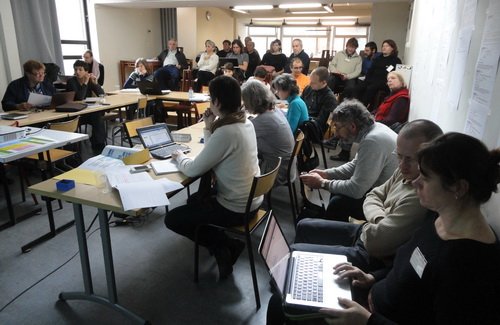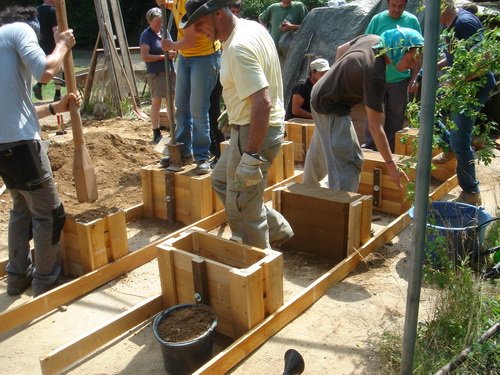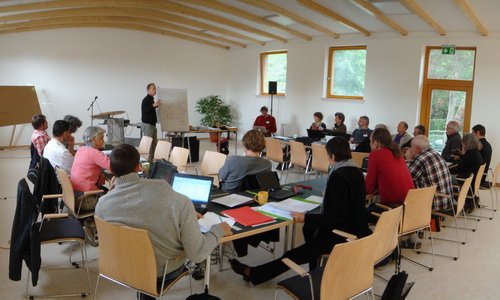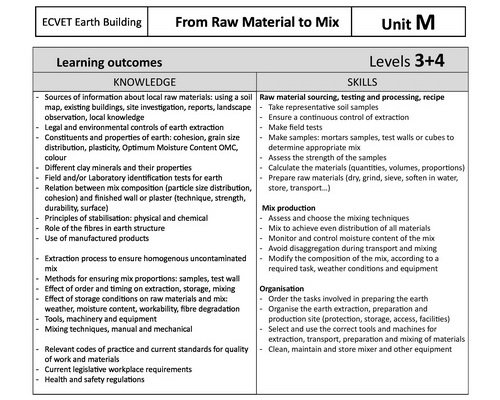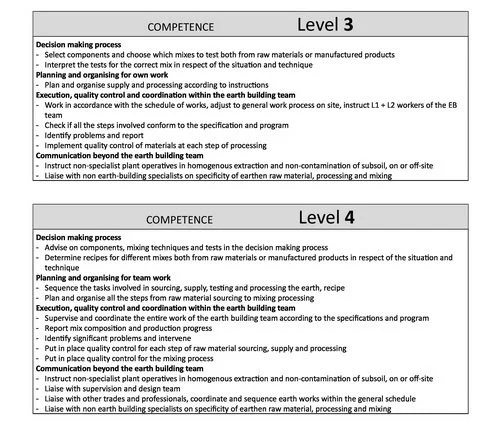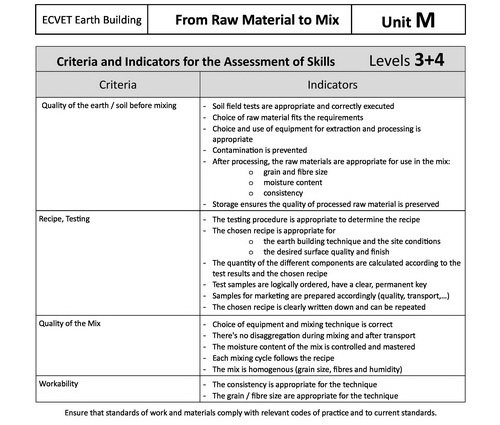PIRATE ECVET Earth
PIRATE ECVET Earth was a project to write learning outcomes for all the structural earth building types.
(“Provide Instructions and Resources for Assessment and Training in Earth building”)
(“European Credit system for Vocational Education and Training”)
Project Leads: Rowland Keable, Becky Little, Tom Morton
2012-2015, Europe
Learning outcomes describe what a learner must know and can do which can be assessed against set criteria, also written as part of the project. PIRATE grew out of the previous Learn Earth project to develop learning outcomes for plasters, from materials mixes to decoration and everything else involved. PIRATE was different because it was about structures, where there is a greater perception of risk.
The first full meeting, lots of ideas on how to go forward with 8 partner countries
The process involved breaking into working groups, developing ideas, mainly in face to face meetings in partner countries. Slowly common trends emerged.
Ideas on paper need testing out in practice
By the end we were pretty skilled at working together
ECVET Earth Units can be selected and used in different order. For example the Unit M is about materials, selection, mixing and blending. This could be used with Unit P Production, B Building or R Repair or taught and assessed entirely on its own.
Learning Outcomes are what you need to know, NOT how you learn them.
Each Unit is presented in the same way:
skills and knowledge
competence or responsibility, and then
the assessment sheet.
Skills and Knowledge are sides of the same coin
Competence is what each level is responsible for on site or in design
Criteria and indicators that the learner, the assessed person, knows enough, has the skills and also the experience to earn that level
The ECVET earth hypotheses project website has loads of information, tools, downloads and links.
For more on the project background click HERE
Relevant EBUKI links
This endeavour underpins many subsequent EBUKI projects, including the JUMP project, the Erasmus+ Mobilities programme.
This also feeds into our work on National Occupational Standards (NOS)
Our Resources page holds many pdfs of the learning outcome units.
-
There had been no development structured development of training and learning outcomes in earth building historically.
The ability to bring earth building into modern Higher and Further Educational curriculums was not possible.
-
To produce learning outcomes (not training manuals) which would allow companies and training organisations to work to a common standard without changing their own training framework.
The learning outcomes for earth building structures at EQF (European Qualification Framework) levels 3 and 4 were largely realised.
-
There were 18 project partners from 8 countries and meetings were held in each of the partner countries.
Online working was also a feature. European funded by Leonardo (now under Erasmus+).
-
Earth building experts from industry and academia sat and agreed the common actions and activities of earth building structures.
It was agreed that cultural geographical and other differences across Europe were not so great that the same learning outcomes could not be applied.
-
ECVET learning outcomes which cover both traditional and modern building methods and techniques were created in 8 languages.
-
Earth building training and assessment were brought into line with materials commonly used in curricula across the continent.
The existence of learning outcomes means that the UK and Czech Republic were able to bring the outcomes into the national systems very rapidly.
-
The production of national standards, the agreement that training for trainers needed development, and a sense of having foundational documents from which to base many other activities.



